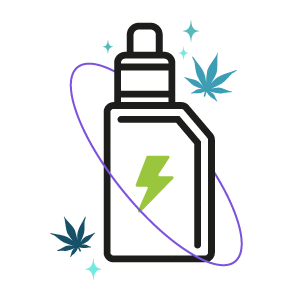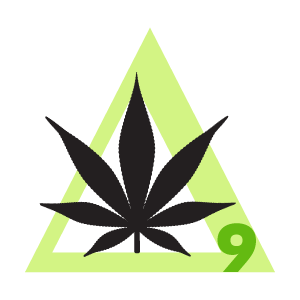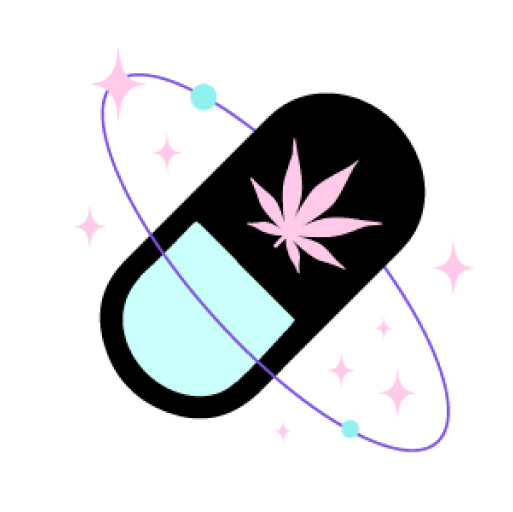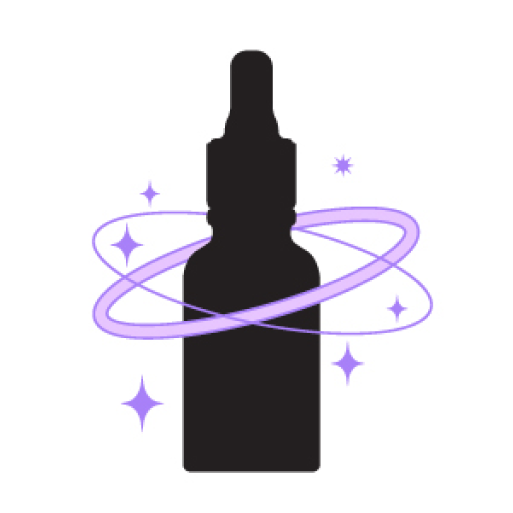Comparing Kava vs Kratom: Find out the Differences and Effects

Table of Contents
- Understanding Kava and Kratom
Comparing Kava vs Kratom - Distinct Differences Between Kava and Kratom
- The Effects of Combining Kava and Kratom
- Can You Overdose on Kratom?
- Conclusion
- FAQ
In the realm of natural remedies, Kava and Kratom stand out for their therapeutic benefits and cultural significance. Though often mentioned in the same breath for their calming effects, the comparison of kava vs kratom effects reveals that these two plants are distinct in their origins, chemical compositions, and impacts on the body and mind. This article delves into the heart of Kava vs Kratom, comparing and contrasting them to enlighten enthusiasts and newcomers alike.
Kava and Kratom are intriguing plants, each boasting a rich tapestry of cultural history, traditional uses, and a complex blend of pharmacological effects that have captured the attention of the modern world. While both plants are celebrated for their ability to alter consciousness and provide relief from various ailments, they do so in markedly different ways, reflecting their unique botanical characteristics and the diverse ecosystems from which they emerge.
Botanical Characteristics
Kava, bearing the scientific name Piper methysticum, is a prized crop of the Pacific Islands, deeply embedded in the traditions of Polynesia, Melanesia, and Micronesia. This plant thrives in the understory of tropical forests, preferring the dappled light and rich, moist soils that characterize its native habitat. Kava plants are notable for their robust, pepper-like shrubs with heart-shaped leaves and a complex root system that is thick, woody, and knotted. It is from these roots that the traditional kava drink is prepared, a beverage revered for its sedative, anxiolytic, and euphoric effects, which has played a central role in social ceremonies, religious rituals, and as a medicinal remedy across many island cultures.
Kratom, known scientifically as Mitragyna speciosa, is indigenous to the lush rainforests of Southeast Asia, including Thailand, Malaysia, Indonesia, and Papua New Guinea. As a member of the coffee family, this tropical evergreen tree shares some stimulant properties with its famous relative but stands out due to its significant height and the unique psychoactive compounds found in its leaves. World of Kratom has a long history of use in its native lands, where its leaves have been chewed, brewed, and utilized for their dual stimulant and opioid-like effects. The plant serves not only as a natural remedy for pain and fatigue but also as an aid for those facing strenuous physical labor or seeking relief from various mental health challenges.
The fascination with Kava and Kratom in the Western world has grown substantially as individuals seek alternative treatments for anxiety, pain, and other conditions. However, the increasing popularity of these plants has also sparked debates on their safety, legality, and potential for abuse. As we delve deeper into the comparative analysis of Kava vs Kratom, it becomes evident that while they share some similarities, their differences between Kava and Kratom in botanical characteristics, traditional uses, and effects on the human body paint a complex picture of natural remedies that deserve both respect and caution.
Comparing Kava vs Kratom
Kava holds a venerable place in the cultures of the Pacific Islands, where it has been cherished for centuries, not merely as a beverage but as a cornerstone of community life and spiritual practice. Its roots are deeply entwined with the social, ceremonial, and religious fabric of societies across Polynesia, Melanesia, and Micronesia. Celebrated for its unique ability to foster relaxation and enhance social connectivity without diminishing mental clarity, Kava facilitates a sense of camaraderie and well-being among participants. This remarkable herb is also turned to for its medicinal properties, offering a natural remedy for anxiety, stress, and insomnia, thus playing a multifaceted role in the health and social practices of Pacific Islander communities.
Origins and Uses
Kratom, with its origins in the dense rainforests of Southeast Asia, presents a fascinating contrast to Kava. This plant is renowned for its dualistic nature, acting as a stimulant at lower doses and providing opioid-like pain relief and sedation at higher dosages. This versatility has made Kratom an integral part of daily life in its native regions, serving not only as a medicinal herb but also as an invaluable aid for those engaged in laborious work, helping to alleviate fatigue and enhance endurance. Its ability to address a wide range of needs, from enhancing productivity to providing relief from discomfort, has cemented Kratom’s place in the traditional medicine cabinets of Southeast Asia.
Preparation Methods
The traditional preparation of Kava involves a labor-intensive process that is as much a part of its allure as the effects it produces. The roots of the Kava plant are meticulously ground, pounded, or chewed to release their potent active ingredients. This resultant mash is then mixed with water, resulting in a murky, earth-toned beverage that carries an earthy flavor profile. In modern contexts, Kava has been adapted into more convenient forms including teas, capsules, and tinctures, making it accessible to a global audience while preserving its traditional essence.
Kratom preparation, while sharing some similarities with Kava, primarily revolves around its leaves rather than tapping into the use of kratom root, which is not commonly utilized for its therapeutic properties. Fresh or dried, Kratom leaves are often chewed directly or ground into a powder to be brewed into a tea, offering a more immediate entryway to its effects. Like Kava, modernity has ushered in a variety of Kratom formats including capsules, tablets, and concentrates, catering to the preferences and lifestyles of contemporary users. These preparations underscore the adaptability of Kratom, enabling it to fit seamlessly into the routines of those seeking its therapeutic benefits.
The distinct origins, uses, and preparation methods of Kava and Kratom highlight the rich cultural tapestries and natural pharmacopeias from which they hail. Each plant offers a unique spectrum of effects, from the serene bonding and medicinal calm of Kava to the energizing and pain-relieving properties of Kratom, illustrating the diverse potential of natural remedies in enhancing human well-being.

Distinct Differences Between Kava and Kratom
The pharmacological profiles of Kava and Kratom reveal significant differences Kava and Kratom in how they interact with the human body, highlighting their distinct therapeutic effects.
Kava’s active constituents, known as kavalactones, target the brain’s limbic system, a critical area involved in regulating emotions, motivation, and the sensation of pleasure.
Pharmacological Distinction
The interaction not only induces a state of relaxation and contentment without directly stimulating dopamine production, thereby avoiding the euphoric “high” associated with many psychoactive substances but also contributes to kava for pain and kava pain relief discussions. The analgesic properties of kava, though less commonly highlighted than its anxiolytic effects, offer potential benefits in managing discomfort, making it a versatile option for those seeking natural remedies for both mental wellness and physical well-being.
In contrast, Kratom operates through a different set of biochemical pathways, primarily due to its active alkaloids, mitragynine, and 7-hydroxymitragynine. These compounds engage the brain’s opioid receptors, which are pivotal in modulating pain, reward, and addictive behaviors. Depending on the dosage, Kratom can produce a wide array of effects, from stimulating alertness and energy at lower doses to inducing euphoria and significant pain relief at higher doses. This breadth of pharmacological effects positions Kratom as both a potential tool for enhancing well-being and a subject of concern regarding its safety and potential for misuse.
Legal Status and Differences
The legal landscape for Kava and Kratom further underscores their differences, reflecting varying degrees of regulatory scrutiny and public health concerns across the globe. Kava, despite its widespread cultural use and growing popularity as a natural anxiolytic, has encountered regulatory challenges due to concerns about its potential hepatotoxicity, particularly with excessive consumption. Nonetheless, it has maintained a legal status in many parts of the world, including the United States, Australia, and the European Union, where it is available under specific regulations that aim to ensure its safe consumption.
On the other hand, Kratom’s legal standing is significantly more complex and variable. Its similarity to opioids, both in terms of its effects and its potential for dependence, has led to a more stringent regulatory approach. Kratom is classified as a controlled substance in several countries and within various states in the US, reflecting widespread concerns over its safety profile and the risk of addiction. These legal distinctions not only affect accessibility but also influence ongoing debates about the therapeutic potential versus the risks of using Kratom, highlighting the need for further research and informed policy-making.
The pharmacological and legal distinctions and differences between Kava and Kratom illuminate the complexities of integrating traditional herbal remedies into contemporary health and regulatory frameworks. While both plants offer potential benefits for mental and physical health, their differing effects and the concerns surrounding their use necessitate a careful, well-informed approach to their consumption.
The Effects of Combining Kava and Kratom
The practice of combining Kava and Kratom, often discussed in terms of “kava vs kratom effects,” has piqued the curiosity of many seeking enhanced effects from these natural substances. However, this combination could potentially amplify each plant’s inherent effects, leading to an increased likelihood of experiencing adverse reactions or fostering dependency. The synergistic effects that might arise from mixing Kava and Kratom are not fully understood, and such combinations could unexpectedly intensify sedation, euphoria, or analgesia, thereby elevating the risk of harmful outcomes. It is paramount for individuals to approach this combination with caution, armed with knowledge of the possible risks. Consulting with healthcare providers becomes indispensable, as they can offer personalized advice based on an individual’s health history and specific circumstances, ensuring that any exploration of these substances is conducted safely.
Potential Risks and Addictive Properties
While both Kava and Kratom offer appealing benefits, such as stress relief and pain management, they also carry the risk of addiction, particularly when used irresponsibly or in high doses. Kratom, with its opioid-like effects, presents a more pronounced concern in terms of addiction potential. Prolonged and heavy usage of Kratom can lead individuals down a path towards physical dependency, characterized by a compulsion to continue using the substance to avoid uncomfortable withdrawal symptoms. These symptoms can range from mild to severe, including nausea, irritability, muscle aches, and emotional distress. Beyond the physical dependency, there are also significant concerns regarding the mental health implications associated with chronic Kratom use. Users may experience a spectrum of issues, from anxiety and mood swings to more severe psychiatric conditions, underscoring the need for cautious and informed use of these substances.
Given these considerations, it becomes clear that while Kava and Kratom can offer therapeutic benefits, their potential for addiction and adverse effects cannot be overlooked. This highlights the importance of moderation, informed decision-making, and seeking professional guidance when exploring the use of these natural remedies, especially when considering combining them.

Can You Overdose on Kratom?
While Kratom overdoses are rare, they can occur, especially in combination with other substances. Symptoms may include agitation, tachycardia, drowsiness, vomiting, and confusion.
The issue of overdosing on Kratom is a critical aspect to consider for users and healthcare professionals alike, given its complex pharmacological profile and the variability in how individuals respond to its consumption. While cases of Kratom overdose are not frequently reported, the potential for overdose exists, especially under circumstances where Kratom is used in significant quantities or in conjunction with other psychoactive substances, which might enhance its effects or contribute to adverse outcomes. The symptoms associated with a Kratom overdose are diverse, reflecting its dual action as both a stimulant and a sedative, depending on the dose and the individual’s unique physiological response. These symptoms can range from mild to severe and may include agitation, a rapid heartbeat (tachycardia), drowsiness, vomiting, and confusion. Such manifestations of overdose highlight the importance of using Kratom with caution, adhering to recommended dosages, and being mindful of the risks associated with combining it with other substances. Understanding these risks is crucial for minimizing the potential for harm and ensuring the safe use of Kratom as a herbal supplement.
Conclusion
Kava and Kratom present a captivating look into natural remedies, each with distinct advantages and considerations. Recognizing their differences is vital for their safe and conscientious use. Whether for relaxation, pain alleviation, or experiencing cultural traditions, it’s important to approach these plants with the respect and caution they demand.
Balancing their benefits against potential risks requires informed and careful use. Education, safe consumption practices, and professional advice are key to integrating Kava or Kratom into wellness routines effectively. By respecting these plants’ complex natures and cultural backgrounds, users can explore their therapeutic possibilities safely and responsibly, ensuring a harmonious interaction with nature’s powerful gifts.
FAQ
Is Kava or Kratom better for anxiety?
Kava is generally considered better for anxiety due to its direct impact on the brain’s GABA receptors, promoting relaxation without the risk of dependency associated with Kratom’s opioid-like effects.
Can I use Kratom for energy?
Yes, in low doses, Kratom acts as a stimulant, providing energy and increased focus.
Are there any legal concerns with using Kava or Kratom?
Yes, the legal status of these substances varies by country and, in the case of the US, by state. Always check local laws before purchasing or consuming Kava or Kratom.
Can combining Kava and Kratom increase their effects?
Combining them can increase the intensity of their effects, but this comes with increased risks of adverse reactions and should be approached with caution.
Can you get addicted to Kava?
Kava is not considered addictive in the traditional sense, as its active compounds primarily affect the GABA system without directly triggering the brain’s reward pathways. However, there can be a psychological dependency with frequent and heavy use, alongside potential health risks with excessive consumption.











